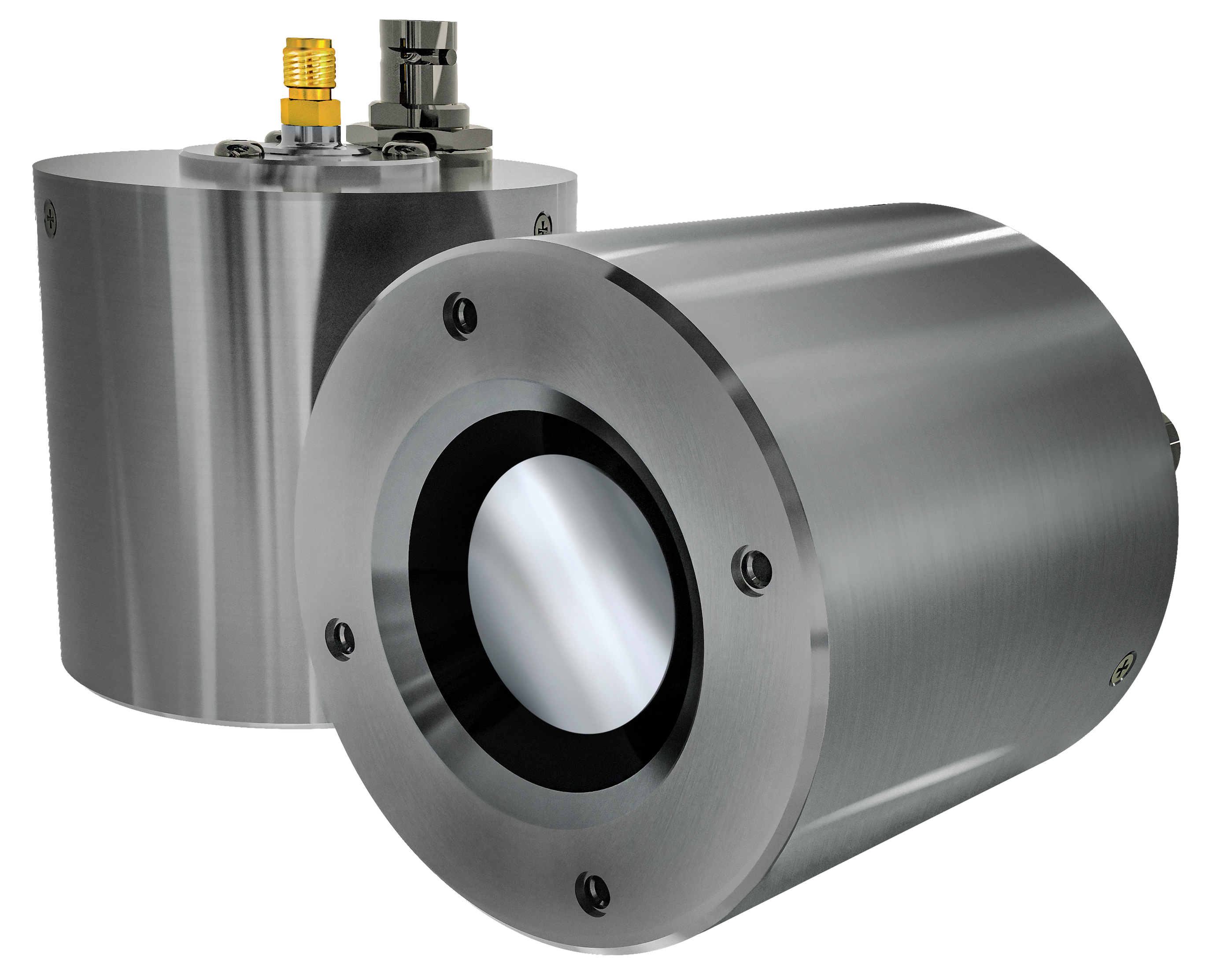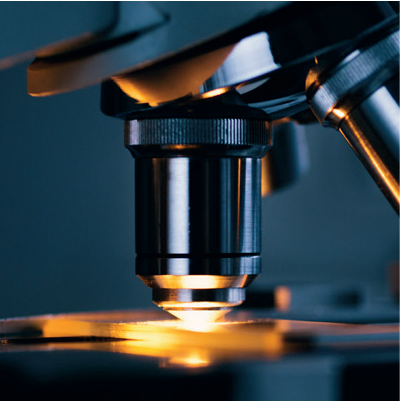PHOTOMULTIPLIER TUBES (PMTs)
Photodiode
Detection of ultra fast phenomena with wide dynamic range
A Photodiode is a device for detecting ultra-fast optical events. It generates an electrical output when illuminated by light and has no internal gain but can work over a large dynamic range.

Features
Optimised anode assembly
provides ultra fast response down to 50 ps risetime
Range of active diameters available
10 mm, 25 mm and 40 mm
Large dynamic range
for sensitivity to a broad spectrum of signal intensities
Available with conductive photocathode undercoating
for increased large signal linearity
Applications
- Inertial Confinement Fusion Diagnostics
- Analysis of fast optical pulses
- Particle and Nuclear physics
- Ultrafast laser diagnostics
Overview
The vacuum photodiode is a sealed vacuum tube with a much faster response than solid state photodiodes.
Vacuum Photodiodes do not contain the Microchannel Plate electron multipliers used in our Photomultiplier Tubes, resulting in unity gain. A benefit of this is the vacuum photodiode’s large dynamic range, enabling measurement of extremely high light signals without degradation.
Range
The table below outlines the Part Number format for our standard product range. To talk further about these products, or bespoke solutions for your application, then please Contact us.
Example: PD025/Q/S20
is a 25mm diameter photodiode, with a
fused silica input window and S20 photocathode.
TYPE | Active Diameter (mm) | Input Window | Photocathode | |
PD0 | 10 | Q (Fused Silica) | SB (Solar Blind) | |
25 | M (MgF2)
| BI (Bialkali) | ||
40 | S20B | |||
S20 | ||||
S25 | ||||
Other photocathodes available upon request.
Specifications
Pulse Rise Time | ||||
Diameter (mm) | Minimun (ps) | Typical (ps) | Maximum (ps) | |
10 | 36 | 50 | 60 | |
25 | 60 | 80 | 100 | |
40 | 60 | 80 | 100 | |
Pulse FWHM | ||||
Diameter (mm) | Minimun (ps) | Typical (ps) | Maximum (ps) | |
10 | 55 | 60 | 100 | |
25 | 100 | 150 | 200 | |
40 | 100 | 150 | 200 | |
Photocathode Response

Normalised Response

Documentation
Related Topic

Application Title
Lorem ipsum dolor sit amet, consec tetuer adipiscing elit, sed diam nonummy nibh euismod tincidunt.

Application Title
Lorem ipsum dolor sit amet, consec tetuer adipiscing elit, sed diam nonummy nibh euismod tincidunt.

Application Title
Lorem ipsum dolor sit amet, consec tetuer adipiscing elit, sed diam nonummy nibh euismod tincidunt.

Application Title
Lorem ipsum dolor sit amet, consec tetuer adipiscing elit, sed diam nonummy nibh euismod tincidunt.
Also Consider
Electronics
Frequently Asked Questions
An MCP-PMT is a microchannel-plate photomultiplier ideal for ultra-fast, low-jitter detection. It excels with fast transient phenomena thanks to sub-nanosecond rise times, low transit time spread (TTS) and minimal after-pulsing – perfect for TOF, LIDAR, FLIM, and other high-speed pulsed applications.
Yes. MCP-PMTs with dual (chevron) or triple (z-stack) MCPs deliver high gain and low noise with excellent timing resolution, ideal for time correlated single photon counting (TCSPC), Cherenkov, and LiDAR.
Photek MCP-PMTs achieve transit time spreads in the tens of picoseconds for single-photon detection, and below 10 ps for multi-photon signals, depending on the model. We can recommend the best configuration for your timing needs.
MCP-PMTs are highly resilient in magnetic fields compared to dynode PMTs. Certain models of Photek MCP-PMTs have been shown to perform well in fields of up to 2 T and remain operable at up to 5 T.
UV to NIR wavelengths are covered with solar-blind, bialkali, and broadband visible photocathodes. Input window options include fused silica, fibre optic glass and specialised materials where required. We match optimal QE and entrance window to your wavelength range.
Both single and multi-anode arrays are available, with configurations up to 64 × 64 outputs. Multi-anode designs enable multi-channel timing, coincidence detection, or spatially resolved measurements.
Photek MCP-PMTs are best suited for detecting ultra-short, high-intensity pulses rather than continuous high-brightness signals. The usable event rate depends on pulse width, duty cycle, and MCP recharge time. Contact the Photek team to determine the best configuration for your application.
Lifetime relates to the total extracted charge from the microchannel plates (MCPs). Specially coated MCPs and optimised operating gain can extend lifetime significantly. Photek can provide guidance on options and optimal operating parameters for demanding applications.
Yes. Fast gating down to < 3 ns is achievable, allowing background suppression and time-resolved detection. Suitable gating modules are available from Photek.
Yes. We can customise the mechanical design, anode configurations, connectors to suit your application. Supporting electronics, including high-voltage power supplies and gating modules, are offered by Photek.


